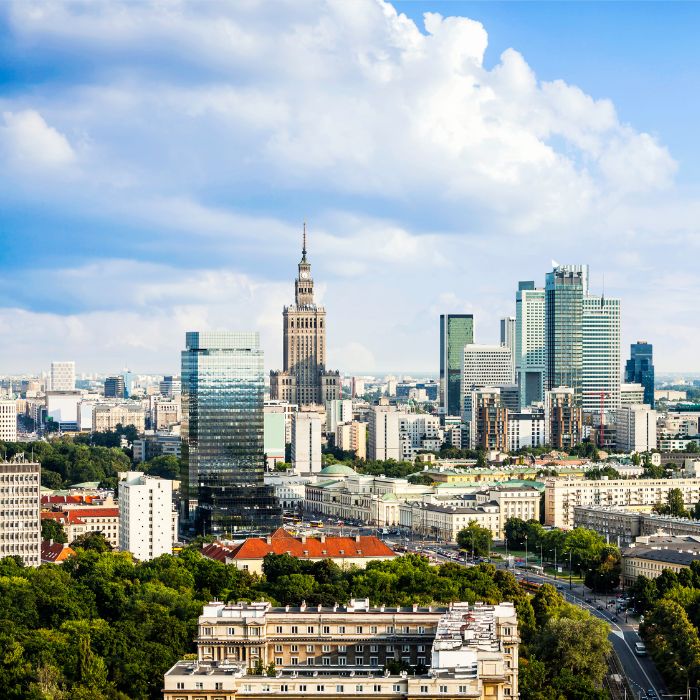The Netherlands and Global Tech Talent Part 1: Impact of Policy Shifts and Challenges in 2025
April 1, 2025
By: Soraya Driessen
The Netherlands has a long history of fostering an innovation-friendly business climate, offering broad opportunities for companies, including attractive incentives. The country has taken great pride in its position as a welcoming, stable and rewarding choice for foreign businesses to invest, and international talent to land.
It has established itself as the strategic gateway for businesses aiming to expand into Europe. With the Dutch economy consistently ranked among the most competitive globally by the World Economic Forum, and a long-standing commitment to a diverse, international workforce, it offers an ideal environment for growth.
As 2025 progresses, however, a key question remains: will 2024’s political shifts and proposals impact the Dutch immigration system’s ability to attract the global talent the country’s innovation and technology sector urgently requires?
Immigration trends in the Dutch tech sector
In 2024, the Dutch immigration and naturalization services (IND) received approximately 22,000 immigration applications in the “Knowledge & Talent” category. This includes Highly Skilled Migrant, EU Blue Card, EU ICT, change of sponsor and cross-border worker applications. A significant percentage of this highly skilled talent has been funneled into the Brainport region in Eindhoven, an area focused on innovation and collaboration between high-tech companies, R&D institutes and local government.
Notably, almost 20% of the Dutch R&D talent is employed within this region. The R&D expenses in the region amount to €3 billion annually, and the industry located here accounts for more than 11% of the Dutch GDP. (Source: Provincie Noord-Brabant and Brainport Eindhoven).
Large multinational companies such as Advanced Semiconductor Materials Lithography (ASML) are prime examples of tech giants operating in the Netherlands. Of ASML’s 22,860 employees based in the country, approximately 9,000 are non-Dutch citizens. The company also employs around 19,500 people internationally, with operations in Asia, the United States, the Middle East and other parts of Europe. In 2023, ASML reported a record-breaking revenue of €27.6 billion, marking a 30% increase from the previous year.
ASML is Europe’s third-largest company by market capitalization, and if immigration and talent access policies continue to shift unfavorably, it may follow in the footsteps of other multinational corporations that have expanded abroad instead of staying in the Netherlands.
Political shifts and impacts on immigration policies
The Brainport region and key tech companies have long advocated for the ability to attract and retain international talent. These businesses view access to a diverse, skilled workforce as a critical factor in their decision to base operations in the Netherlands.
In November 2023, the Dutch electorate gave significant support to Geert Wilders’ right-wing PVV party. Migration and expat benefits were a key topic during the fall of the previous Rutte government in the summer of 2023, in party programs and during the elections. Like many countries in Europe, the Netherlands rules by coalition government, which implies that any strong party lines are typically moderated during the coalition negotiations, but also that there is a significant amount of “policy paralysis” while the parties figure out how they will divide ministries among themselves. Considering the Netherland’s historically bad track record with speedy government formation, Fragomen predicted no immediate and major changes to the Dutch immigration system.
As anticipated, four months later, Wilders announced that he would forego the prime minister seat, that the other party leaders would return to their parliament seats and that the Netherlands was exploring the possibility of a “program cabinet” – where the parties appoint a prime minister and fill the remaining cabinet seats with politicians from their parties, other parties and non-politicians who are experts in their fields.
The coalition agreement was not a highly detailed, in-depth agreement, but instead an agreement on key lines, with lots of leeway for individual ministers and increased pressure power for the parliament. Eventually, the new government was confirmed and sworn in July 2024, a significant eight months after the elections.
The outgoing government, however, did vote on a key topic that was brought into the spotlight: the 30% expat tax benefit ruling. Under this ruling, highly skilled expats could receive up to 30% of their gross salary tax-free. Until 2024, this benefit was granted for five years. However, the new regulations capped it at 30% for a period of 60 months, followed by a gradual reduction to 20% and 10% over the next two 20-month phases. Further discussions and general outcry by the business community at large let to new negotiations, until it was finally announced that the 30% ruling would be reduced to 27% by 2027.
Challenges ahead
As the demand for skilled labor and specialized talent continues to grow both nationally and regionally, the Netherlands faces a critical crossroads. The country's aging population, expected to peak in 2040, coupled with ongoing skills shortages, poses a significant challenge to its tech and innovation sectors. The lack of alignment between educational programs and business needs, restricted immigration pathways for specialized tech talent and the reduction of the 30% ruling are all factors that could stint the country’s ability to remain a top destination for global talent.
Coming up: Part Two
The second installment in this blog series will explore potential solutions and policy recommendations to address the challenges facing the Netherlands in attracting and retaining global tech talent.
Need to Know More?
For questions regarding immigration to Netherlands or other related queries, please contact Client Engagement Manager Soraya Driesson at [email protected]. Stay tuned for Part Two in this blog series to be published in the coming weeks.
This blog was published on 1 April 2025, and due to the circumstances, there are frequent changes. To keep up to date with all the latest updates on global immigration, please subscribe to our alerts and follow uson LinkedIn, Twitter, Facebook and Instagram.















